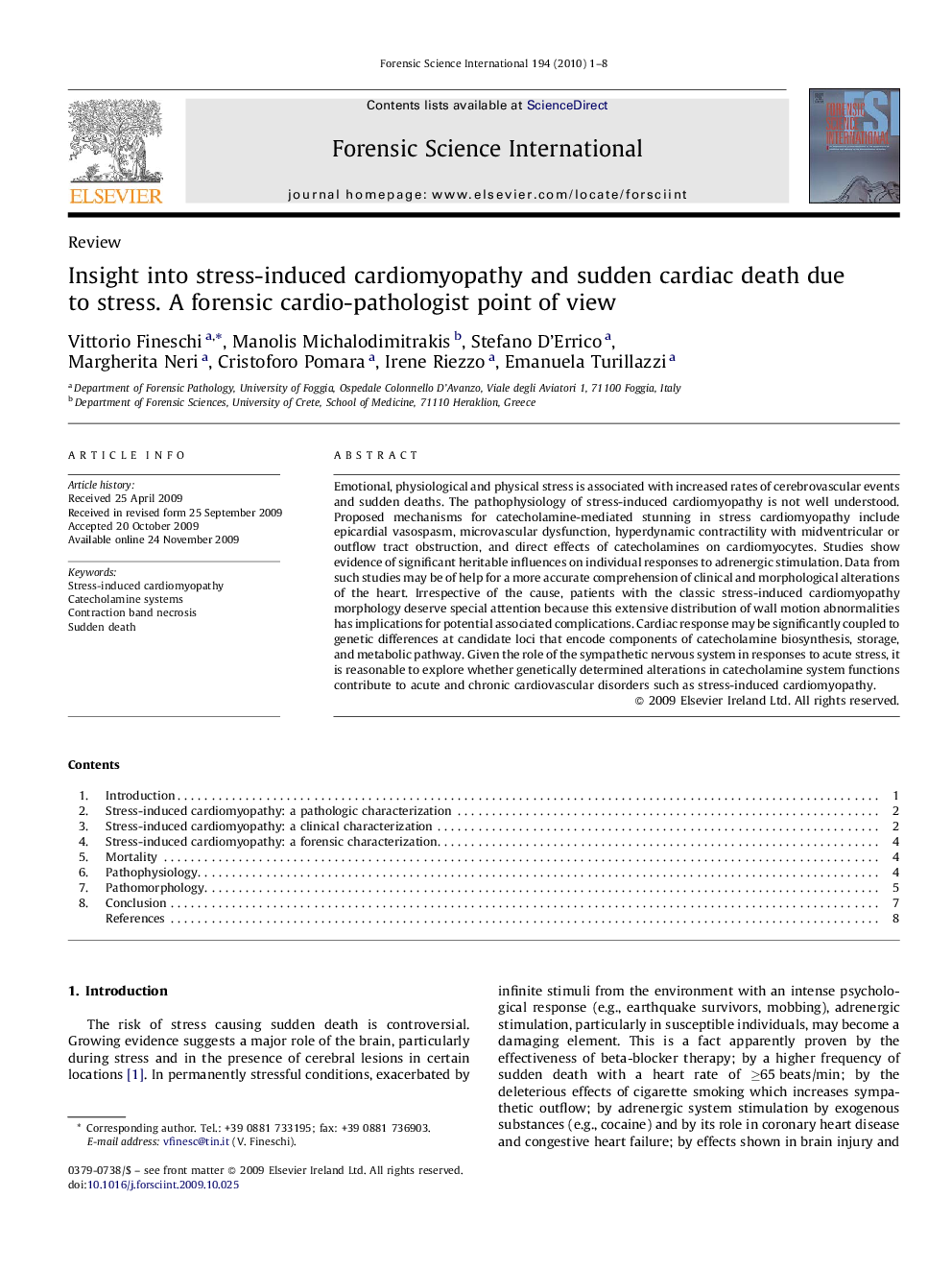| Article ID | Journal | Published Year | Pages | File Type |
|---|---|---|---|---|
| 97155 | Forensic Science International | 2010 | 8 Pages |
Emotional, physiological and physical stress is associated with increased rates of cerebrovascular events and sudden deaths. The pathophysiology of stress-induced cardiomyopathy is not well understood. Proposed mechanisms for catecholamine-mediated stunning in stress cardiomyopathy include epicardial vasospasm, microvascular dysfunction, hyperdynamic contractility with midventricular or outflow tract obstruction, and direct effects of catecholamines on cardiomyocytes. Studies show evidence of significant heritable influences on individual responses to adrenergic stimulation. Data from such studies may be of help for a more accurate comprehension of clinical and morphological alterations of the heart. Irrespective of the cause, patients with the classic stress-induced cardiomyopathy morphology deserve special attention because this extensive distribution of wall motion abnormalities has implications for potential associated complications. Cardiac response may be significantly coupled to genetic differences at candidate loci that encode components of catecholamine biosynthesis, storage, and metabolic pathway. Given the role of the sympathetic nervous system in responses to acute stress, it is reasonable to explore whether genetically determined alterations in catecholamine system functions contribute to acute and chronic cardiovascular disorders such as stress-induced cardiomyopathy.
